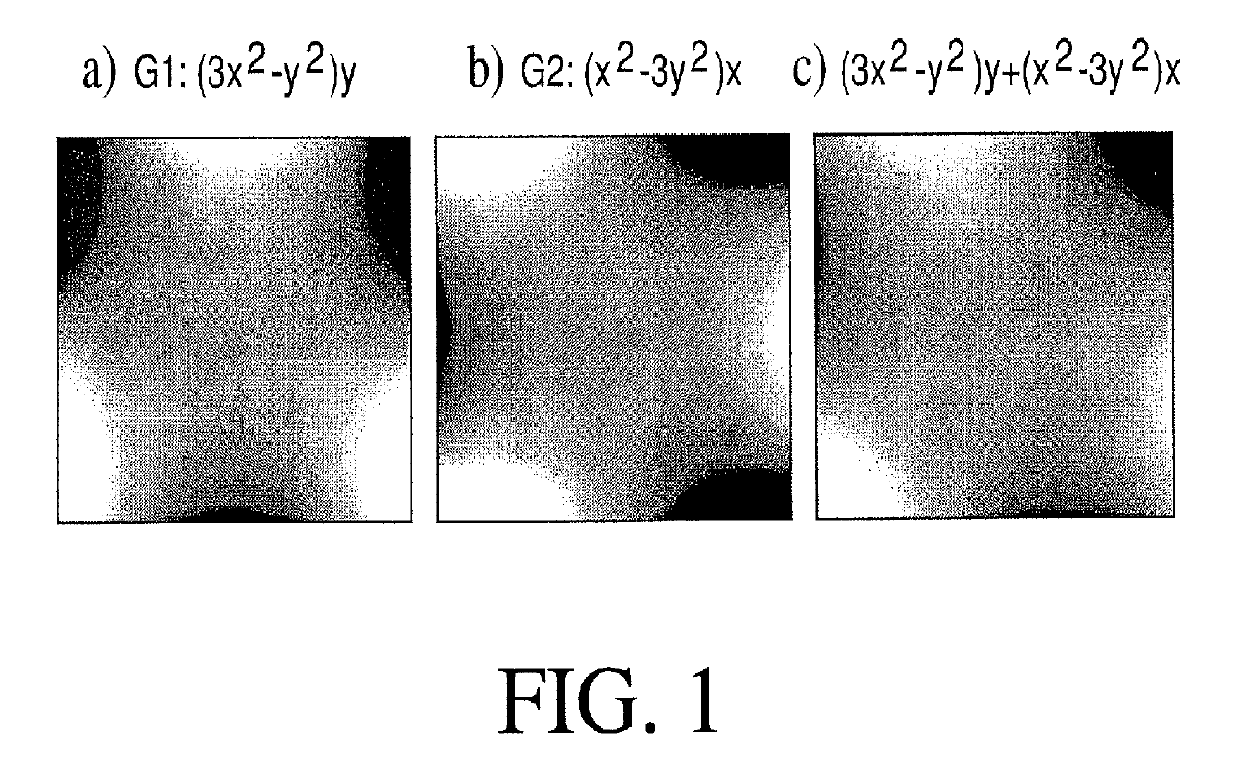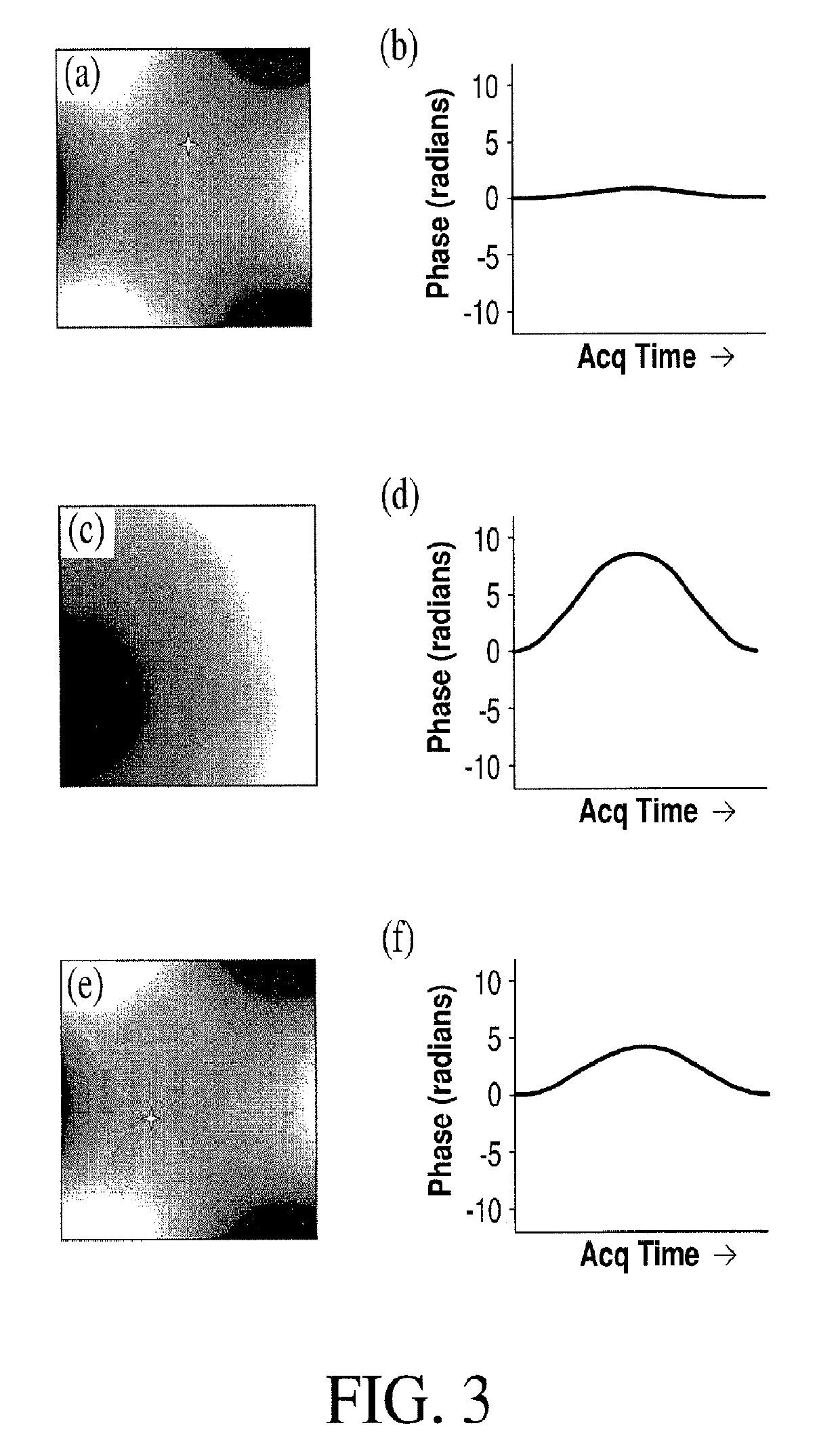Single-echo imaging with nonlinear magnetic gradients
a single-echo imaging and nonlinear magnetic gradient technology, applied in the field of single-echo imaging with nonlinear magnetic gradients, can solve the problems of affecting the accuracy of single-echo imaging, etc., to achieve the effect of efficient encoding of signals, easy resolution, and easy spatial localization
- Summary
- Abstract
- Description
- Claims
- Application Information
AI Technical Summary
Benefits of technology
Problems solved by technology
Method used
Image
Examples
Embodiment Construction
[0042]Referring now to the various drawings, the present invention increases imaging speeds in MRI by using nonlinear magnetic gradients combined with parallel receiver technology and dynamic modulation of these magnetic gradients in such a manner that a unique signature is imposed on each region within the field of view such that spatial localization is achieved.
[0043]Before proceeding with the detailed description of the present invention, it is appreciated that MRI uses spatially-varying magnetic fields, termed gradients, in order to spatially localize signals. Fundamentally, magnetic resonance imaging differs from spectroscopy through the use of gradients that assign different frequency codes to separate spatial regions in the area to be imaged. The Larmor precession equation states that the frequency of the RF signal applied in MRI processing be proportional to the magnetic field intensity. While prior research (as discussed above) has focused on efficient methods and apparatus...
PUM
 Login to View More
Login to View More Abstract
Description
Claims
Application Information
 Login to View More
Login to View More - R&D
- Intellectual Property
- Life Sciences
- Materials
- Tech Scout
- Unparalleled Data Quality
- Higher Quality Content
- 60% Fewer Hallucinations
Browse by: Latest US Patents, China's latest patents, Technical Efficacy Thesaurus, Application Domain, Technology Topic, Popular Technical Reports.
© 2025 PatSnap. All rights reserved.Legal|Privacy policy|Modern Slavery Act Transparency Statement|Sitemap|About US| Contact US: help@patsnap.com



